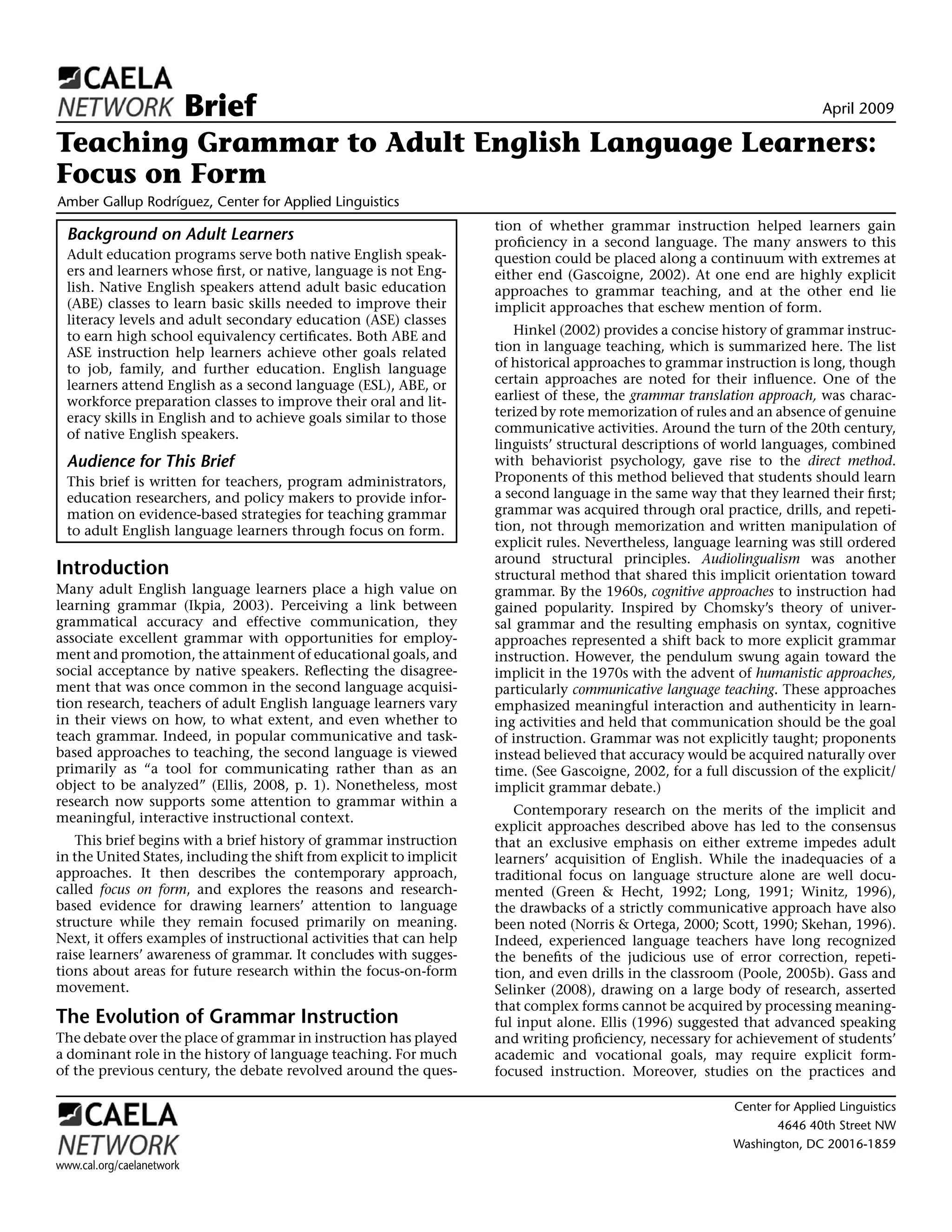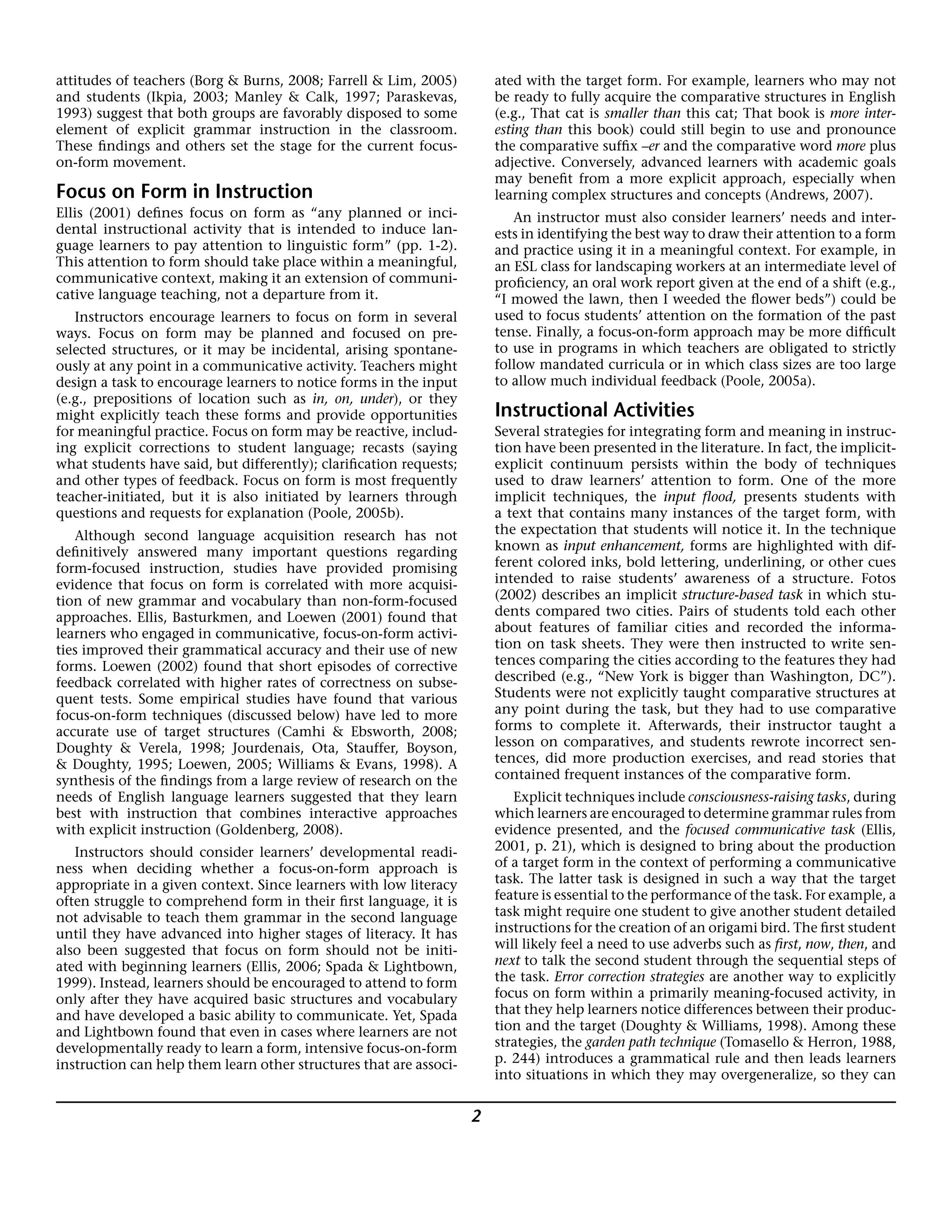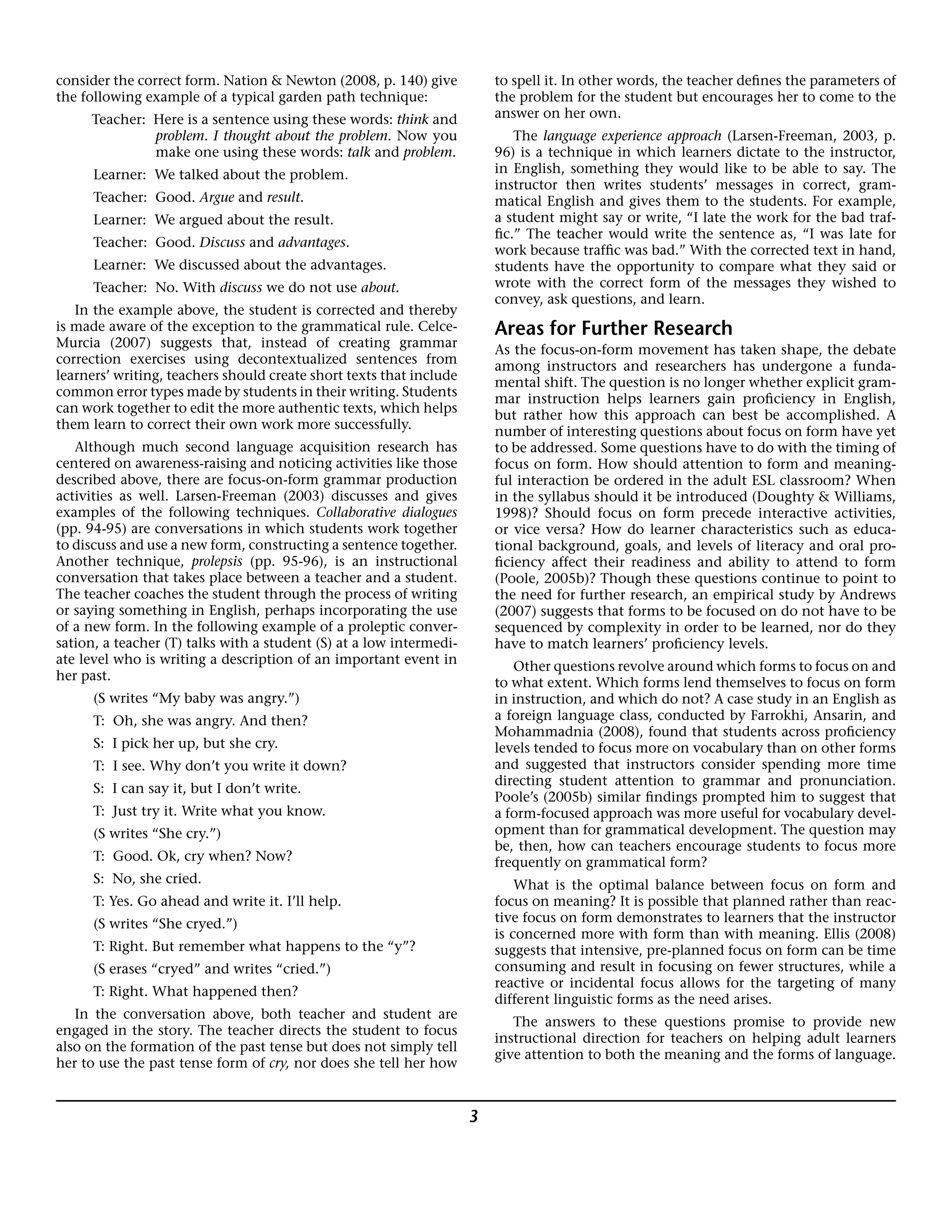This document discusses strategies for teaching grammar to adult English language learners through a focus-on-form approach. It begins by providing background on adult English language learners and a brief history of grammar instruction. It then describes the contemporary focus-on-form approach, which involves drawing learners' attention to linguistic forms within meaningful, communicative contexts. Several instructional techniques are discussed, ranging from more implicit methods like input flooding to more explicit techniques like collaborative dialogues. The document concludes by noting that further research is still needed to determine how attention to form and meaningful interaction should be ordered and how learner characteristics affect readiness for focus on form.



